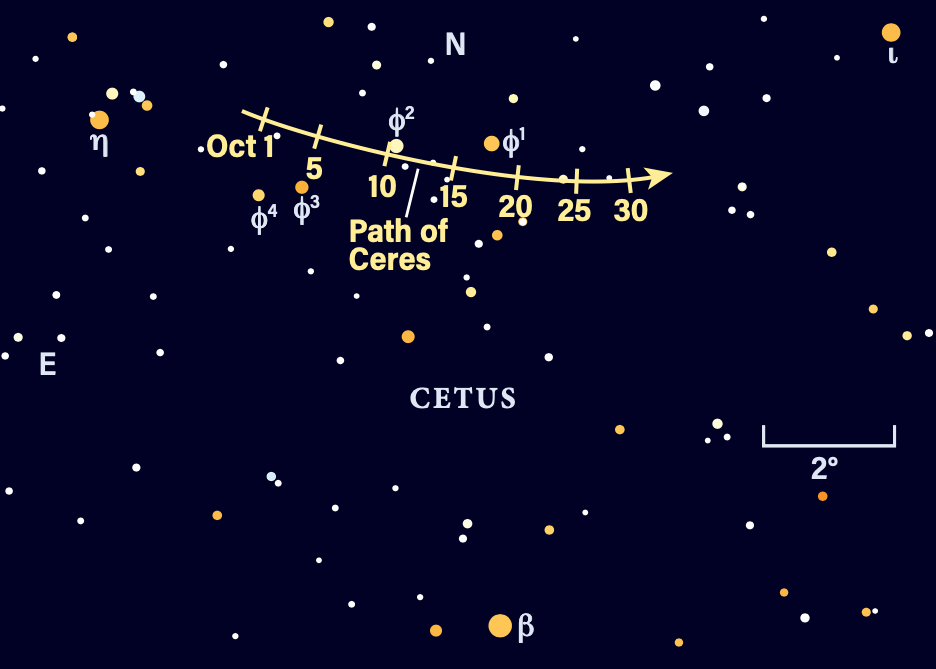The largest body in the main belt, 1 Ceres, passes close to a 5th-magnitude star in Cetus the Whale tonight.
Ceres spends all month within a short…

The largest body in the main belt, 1 Ceres, passes close to a 5th-magnitude star in Cetus the Whale tonight.
Ceres spends all month within a short…